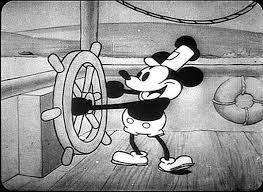When director Denis Villenueve began working on a theatrical adaptation of Frank Herbert’s Dune, the first artist he approached was composer Hans Zimmer. Both lifelong fans of the novel, Zimmer expressed hesitancy to take on the project, posing Villenueve the question, “Is it a good idea to tackle your childhood dreams?” “Are we meant to fail?” Dune is among the most celebrated books in the sci-fi genre, but it was long considered to be unadaptable to film due to the complexity of its story. To summarize the book’s plot, Dune is set in the far future where humanity has colonized much of the universe in a feudal society. Paul Atreides, the heir to House Atreides, is forced to take refuge with the Fremen people of Arrakis, to whom he represents their prodigal messiah, after his family is attacked. Arrakis, a vast desert planet with deadly temperatures and massive carnivorous sandworms that are attracted to sound, is the only source in the universe of the substance spice, a hallucinogenic that is crucial to space travel. Director David Lynch brought Herbert’s work to the big screen in 1984, but the film was both a commercial and critical failure.
It would take 37 years for another Dune film to be released. 2021’s Dune, directed by Villenueve and scored by Zimmer, succeeded in many of the areas where its predecessor had failed. Dune was widely praised for its cast, led by Timothée Chalamet, and grossed a respectable $440 million despite releasing during the Covid-19 pandemic. Perhaps most crucially, the film’s brilliant world-building brings the novel to life and immerses the viewer in the universe, even those not overly familiar with the source material. The movie is also notable for its stunning visuals and sound, something that has become Villenueve’s calling card along with his previous sci-fi films. Adapting only the first two-thirds of the book, 2021’s Dune ends without resolving the story, setting up a sequel covering the rest of the novel’s events.
Following a four-month delay due to the SAG-AFTRA and WGA strikes, Dune: Part Two was released on March 1. Once again helmed by Villenueve and co., the movie builds on many of the strengths of Part One. The cast is again fantastic, with Chalamet providing a gripping performance as Paul Atriedes. Other standouts include Rebecca Ferguson as Lady Jessica, Paul’s conniving mother, and Austin Butler, who plays the delightfully evil Feyd-Rautha Harkkonen. Needless to say, Dune: Part Two’s visuals are amazing and unique, with Villenueve implanting his style in Herbert’s story. Zimmer provides a beautiful score, with music at the same time triumphant and heartbreaking, capturing the bittersweet nature of the film’s events. Dune: Part Two is a massive success in cinema and a movie that especially demands to be seen on the biggest screen possible.
Villenueve’s vision for a Dune film was long in the making. Having first drawn storyboards for the film as a teenager, Villenueve was faced with the task of reconciling his ideas for the film from his youth with adapting the book for modern audiences. In an interview with Vanity Fair, in which the director discussed his initial conversation with Zimmer about the project, Villenueve spoke of the process, saying, “You cannot bring to the screen the full potential of the dream of the teenager…That was the specificity of this project, to try to go back in time and bring back those images to the surface.” Denis Villenueve’s two Dune films are profound for many reasons, including their exploration of the book’s complex themes surrounding religion, ecology, and humanity. However, in an era where many films choose to play it safe rather than attempt to distinguish themselves with their own style, Dune and Dune: Part Two stand as a testament to what filmmakers can bring to life when given the opportunity.



















